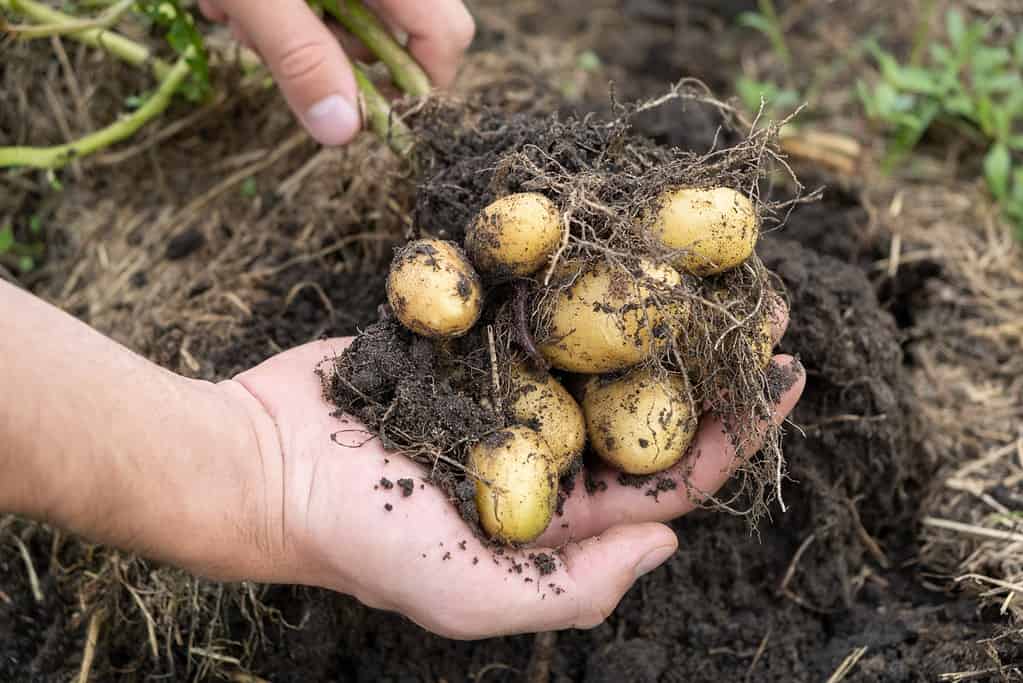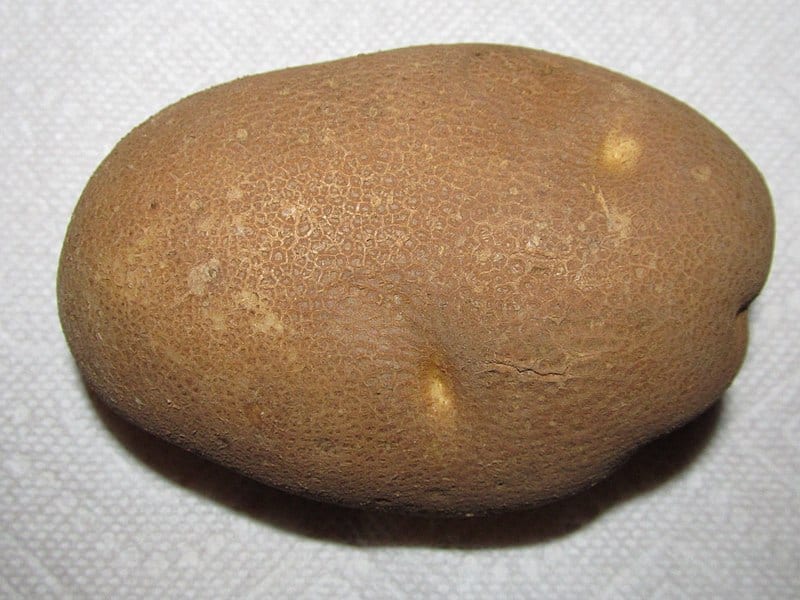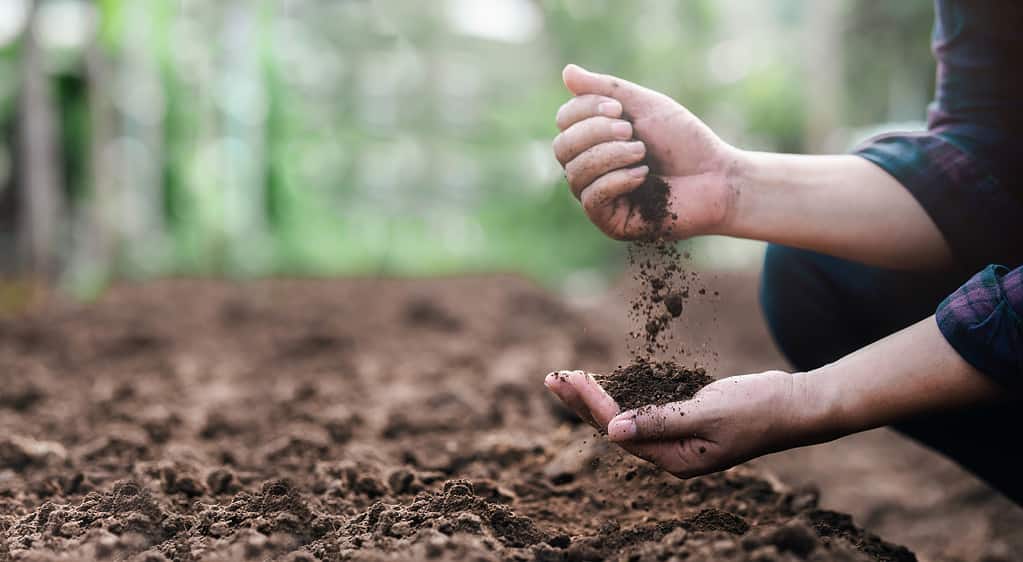For both farmers and gardeners, there comes a feeling of excitement and anticipation when unveiling the fruits of their labor. Especially when they gather their harvest of potatoes. It is a moment that has been nurtured with care over the course of months and carefully tended to throughout the seasons. This is why timing is of the essence. If you harvest potatoes too early, they will not fully develop. While waiting too long, these veggies can become overripe and potentially affect their taste and texture. Read on and find out when is the perfect time to dig out these delectable spuds from your potato crop.
Harvesting Times for Different Seasons of Potatoes
Early potatoes
Early potatoes refer to baby potatoes that are harvested first during their season, which is around 75 to 90 days after planting. These potatoes display tender skins and are smaller in size.

Baby potatoes are small in size and have tender skins.
©ArieStudio/Shutterstock.com
Maincrop potatoes
Maincrop potatoes are typically harvested later in the season, around 90 to 120 days after planting. These potatoes have skins that are thicker and larger in size compared to new varieties. In addition, when its leaves start turning yellow and wilt, that’s an indication that your maincrop potatoes are ready to be dug up.

Russet potatoes fall in the category of main potatoes.
©Willis Lam (Pest15) / CC BY-SA 2.0, Flickr – Original / License
Late potatoes
Late potatoes are left behind the longest for extra maturity, often around 120-135 days after planting. These potatoes are harvested when crop vines have completely died, and the skins have set. Late potatoes offer the advantage of being ideal for long-term storage and survive throughout the winter.

©HannaTor/Shutterstock.com
Key Indicators That Your Crop Is Ready to Be Harvested
- Plant Age: Make sure to keep track of how many days have passed since you planted the potatoes. Each potato variety has its timetable for reaching maturity. Furthermore, check your package guideline that came with your seed potatoes for an estimate of how many days it will take for them to fully develop.
- Crops appearance: Keep an eye on the leaves of the potato plant. As the plants mature, you’ll notice that the leaves begin to turn yellow and wilt. This is perfectly normal. In addition, the crop growth cycle indicates the development and each stage of maturing potatoes.
- Flowering Stage: the blooming of flowers is commonly seen in potato varieties. Therefore, it serves as a useful guideline. When harvesting potatoes, it’s best to dig them up before their flowers have fallen. However, for maincrop potatoes, it’s advisable to wait until the plants have completed their flowering phase.
- Dig Test: To check the potatoes underground, gently dig up a plant and inspect its tubers. Early potatoes are usually ready to harvest when they reach the desired size. For example, a slightly larger size of a golf ball. As for maincrop potatoes, look for fully developed tubers and well-formed skins.
- Firm skin: Potatoes are usually ripe and ready for harvest when the skin is hard and firm. Avoid harvesting if the skin peels off easily.
- Potato size: Consider the size you want the potatoes to be. Typically, early potatoes are smaller and tender, while maincrop potatoes are larger and better for storing. Moreover, decide when to harvest them based on your preference and the demand in the market.
- Soil Moisture: The moisture content in the soil has an impact on the ease of harvesting. It is generally more convenient to harvest potatoes when the soil is moderately damp than excessively wet. Surprisingly, wet soil causes clumping and harms the crop stems.
- Weather Conditions: Monitor the weather forecast. If there’s a prediction of heavy rains, push harvesting to another day that has warmer weather. Rather, avoid potential damage to your potatoes.

Harvest potatoes when the soil is moderately damp than excessively wet.
©Sakorn Sukkasemsakorn/iStock via Getty Images
Tips for Storing Potatoes
- To ensure the freshness and longevity of your potatoes, it is crucial to store them correctly.
- Organize each type of potato based on its shelf life.
- Inspect each potato and remove any damaged produce that show signs of rot.
- Place the harvest in a dark environment with temperatures ranging from 45 to 50°F to keep your potato harvest in optimal condition.
- Store potatoes in a wicker basket, wooden crate or potato sack that allows constant airflow.
- Always keep the storage area dry to prevent the growth of mold and bacteria.
- Avoid exposing your potatoes to direct light, as it can cause them to turn green.
- To prevent spoilage, don’t store potatoes and onions together.
- Don’t wash potatoes after harvest, as excess moisture from washing can accelerate rotting.
- Invest in a root cellar as this would be a great option for storing items over a long period of time.

Store potatoes in a wicker basket, wooden crate or potato sack that allows constant airflow.
©Val_R/Shutterstock.com
By following these steps, your potato collection will always be fresh and highly valued for its appearance and taste.
The photo featured at the top of this post is © nednapa/Shutterstock.com
Thank you for reading! Have some feedback for us? Contact the AZ Animals editorial team.







